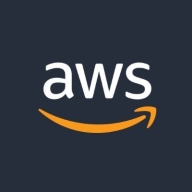

Morpheus and AWS Control Tower compete in cloud management and optimization. Morpheus has the upper hand with its flexibility and multi-cloud integration, appealing to those seeking a customizable solution. AWS Control Tower is favored for enterprises focusing on AWS-native operations due to its strong governance and security features.
Features: Morpheus provides extensive multi-cloud management, robust automation, and wide integration capabilities. It allows unrestricted workflows across various clouds. AWS Control Tower focuses on security and compliance with its comprehensive setup of guardrails, centralized authentication, and automation management within AWS.
Room for Improvement: Morpheus could improve in offering more predictable pricing and reducing initial setup costs. Better customization options and simplifying multi-cloud functionalities would enhance its appeal. AWS Control Tower would benefit from expanding its support for non-AWS services, improving integration with third-party clouds, and enhancing ease of use for diverse environments.
Ease of Deployment and Customer Service: Morpheus is known for seamless deployment across various clouds and strong support, suitable for businesses leveraging diverse platforms. AWS Control Tower provides a streamlined setup within the AWS environment but might require additional configuration to integrate with other services. Its customer service excels in supporting AWS-centric operations.
Pricing and ROI: Morpheus has a higher initial setup cost but offers significant ROI potential through efficient multi-cloud resource usage. AWS Control Tower offers more predictable pricing with its enveloped services, generally presenting a lower initial cost, appealing to AWS-focused businesses seeking streamlined ROI.
| Product | Market Share (%) |
|---|---|
| Morpheus | 7.5% |
| AWS Control Tower | 1.3% |
| Other | 91.2% |


| Company Size | Count |
|---|---|
| Small Business | 9 |
| Midsize Enterprise | 2 |
| Large Enterprise | 7 |
| Company Size | Count |
|---|---|
| Small Business | 5 |
| Midsize Enterprise | 2 |
| Large Enterprise | 3 |
AWS Control Tower offers the easiest way to set up and govern a new, secure, multi-account AWS environment. It establishes a landing zone that is based on best-practices blueprints, and enables governance using guardrails you can choose from a pre-packaged list.
Morpheus is a 100% agnostic cloud management platform (CMP) designed from the ground up to unify management of multi-cloud and hybrid IT while empowering DevOps teams with self-service provisioning of bare metal, VM, and container-based application services.
We monitor all Cloud Management reviews to prevent fraudulent reviews and keep review quality high. We do not post reviews by company employees or direct competitors. We validate each review for authenticity via cross-reference with LinkedIn, and personal follow-up with the reviewer when necessary.